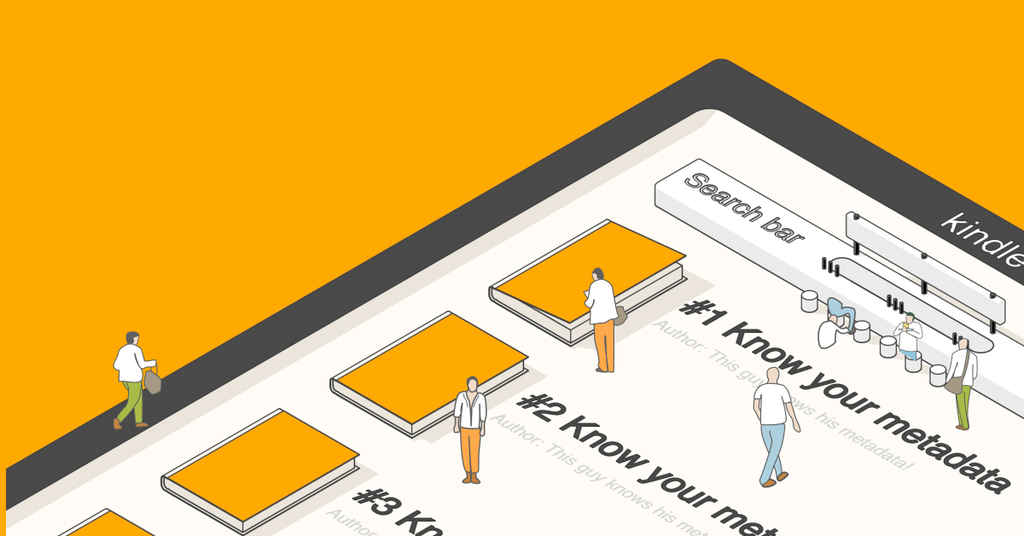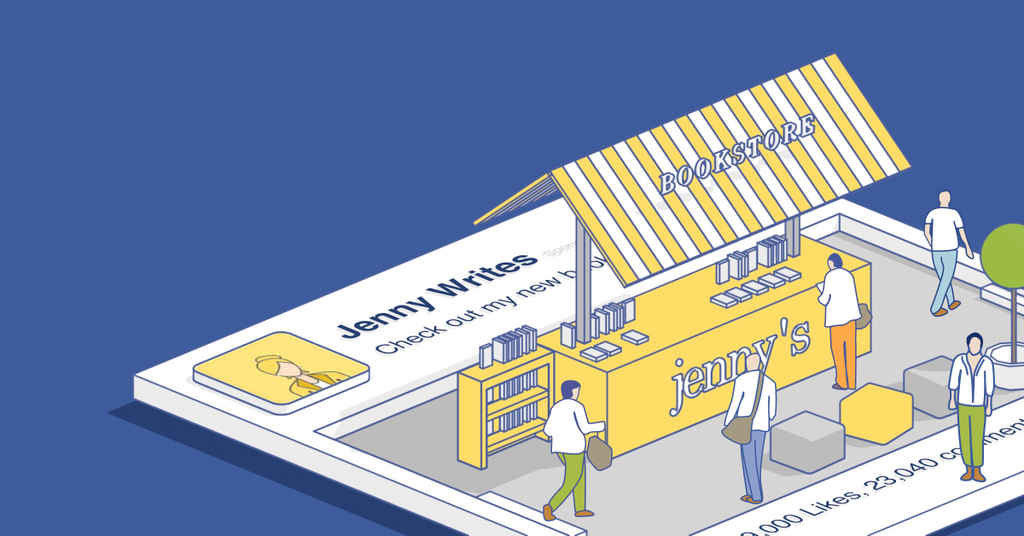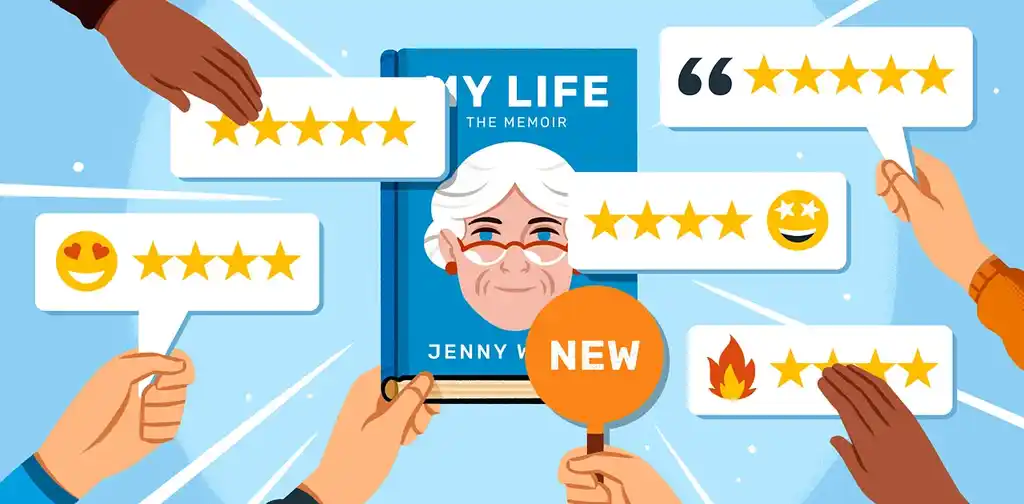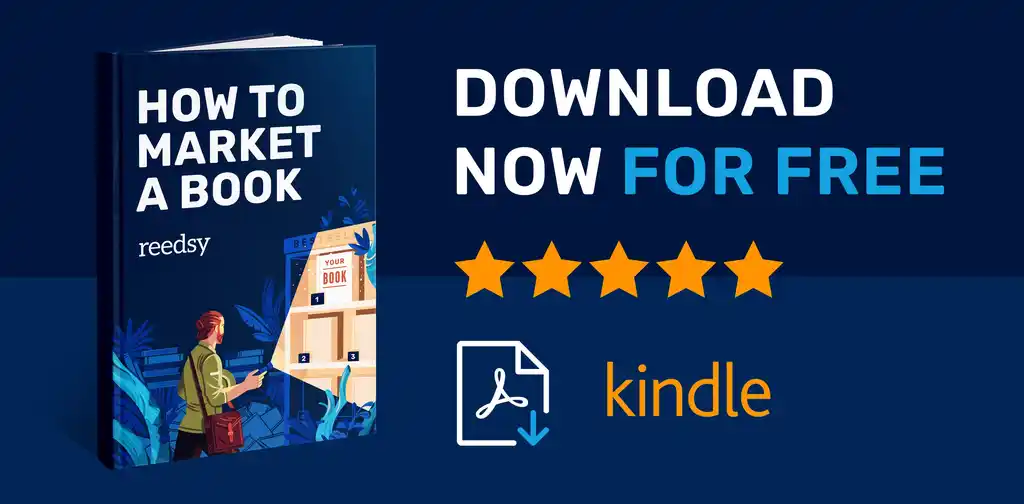Last updated on Oct 15, 2025
How to Market an Ebook on a $10 Budget
Ricardo Fayet
Reedsy co-founder and Chief Marketing Officer, Ricardo Fayet has worked with hundreds of authors on their launches and marketing campaigns. He is the author of two bestselling guides on marketing for authors, and a regular presenter at the largest writers' conferences.
View profile →According to Canadian e-reading retailer Kobo, ebook consumption almost doubled between April 2019 and April 2020. Authors and business owners alike are cashing in on this boom thanks to the low cost of creating ebooks relative to print books. But even a surge this big isn’t guaranteed to send your book flying off the virtual shelves. Once it’s out there, knowing how to market your ebook will ultimately decide whether it sells.
With a bit of careful planning, marketing your book doesn’t have to cost the world. In fact, some of the most effective tactics are completely free. With this in mind, we’re giving you nine detailed pointers to help you achieve your ebook marketing goals, all within a $10 budget.
1. Identify your target audience
Before you start promoting your ebook, work out who exactly you are marketing to by identifying your target audience. Though it may seem attractive to cast your net wide and reach as many readers as possible, trying to appeal to every possible reader is a losing battle. Focusing your marketing efforts on a specific group that is actually likely to convert into sales will be much more cost-effective.
Pro tip: Construct a proto-persona to represent your target audience. You should have an idea of their age, hobbies, and where they spend their time online. These characteristics will reveal where to concentrate your marketing, your branding, and the tone and style of your copy.
Free course: Find Your Target Readers
Identify your target readers, find out where they 'live', and get them to buy your book with this 10-day course. Get started now.
2. Create a website and landing page
A strong, standout website is key to grabbing your reader’s attention and letting them know more about you and how to buy your ebook. You don’t need to be a professional web designer to create a killer site — free providers such as WordPress and Wix offer customizable off-the-shelf templates almost anyone can use.
When creating your website, there are four important things to keep in mind:
Keep it clear and simple 🔍
A site with all the bells and whistles of fancy fonts and complicated navigations may actually end up being difficult to use, and people will just click off because they can’t find anything. Use typography and colors that allow any text to be easily read but also in-keeping with your brand and keep navigations simple and intuitive.
Make your retailer links prominent 💳
Since sales are your ultimate goal, it should be effortless for readers visiting your site to purchase your ebook. There’s no need to overdo it and fatigue users with excessive self-advertisement pop-ups. Simply ensure that links to retailers are clearly signposted and presented in an organized and eye-catching way.
Always capture visitor details 📧
Install pop-ups or sign-up links to collect contact details so you can stay on users’ radars. Improve your chances by creating a ‘lead magnet,’ offering something in return for them signing up. This could be a piece of exclusive writing or a handy template — you know what will best appeal to your audience.
Include links to social media 📱
Provide links to your social media pages to drive traffic directly from your website in just one click, helping to increase your reach.
Create a specific landing page for your ebook 🚀
Your ebook’s dedicated age on your website should contain:
- Background information
- Excerpts from your book
- A clear call to action to download your ebook with a link or button
Use images and punchy text to grab your reader's attention. A landing page is a great place to add in your social proof: evidence that others have enjoyed your book or credentials that prove you know what you’re talking about. This might include reviews or quotes from experts.
Include a blog on your website to connect with your audience and keep them up to date both before your ebook is published and crucially afterward, driving traffic to your landing page.
If you publish your ebook on Amazon, it’s advisable that you set up an Amazon Author Central page. On this page, you can track sales and marketing data and let your readers know about you and your ebook. Going the extra mile and setting up an Amazon Author Central page for international Amazon sites can maximize reach if you are trying to reach a wider audience.
3. Go above and beyond on social media
Being selective with your social media efforts will allow you to do a better job of achieving meaningful conversion. Establish which social media platforms your target audience frequents — these should be where you focus the bulk of your attention. Deliver high-quality, consistent content to your audience to keep them engaged over time.
Social media needs to be a two-way street — not just you shouting promotions into the void. Create content that encourages interaction with your followers. Social media platforms like Instagram, Twitter, and Facebook have features allowing you to ask questions or create polls to which followers can respond. Engagement campaigns, such as running competitions that make following your account or commenting on a video an entry requirement, help encourage direct interaction.
Pro tip: Cross-promote your content. For example, tweet about your most recent Instagram giveaway to increase reach with little added effort.
Engage with influencers
Influencers aren’t just for the makeup and fashion brands of the world — they’re also a useful avenue for promoting ebooks. Influencers, by definition, have huge followings who look to them for guidance on what to do or buy. Whether you choose a BookTuber or your favorite money management guru, start off by following them on social media. Then you can reach out and, eventually, organize collaborations.
Don’t steam in demanding a quid pro quo arrangement from the start. Invest time in cultivating genuine relationships so that your connections will want to promote your work when the time comes.
4. Create and nurture a mailing list
According to Ricardo, Reedsy’s resident marketing maven, “a mailing list is probably the most precious thing any author can have''. This indispensable asset allows you to keep in touch with past customers and contacts and keep them updated (read: promote) on your new work.
To make sure you don’t miss out on the benefits, Ricardo has created a free course in which he takes you through the ins and outs of setting up a mailing list, from choosing a provider (many of which have free plan options) —to growing your list:

FREE COURSE
How to Build Your Author Mailing List
Learn how to connect with your audience and sell more books with email.
With a mailing list, you can:
- Create automations to nurture new subscribers. Set up email sequences that are automatically sent when a user completes a predetermined action, like signing up for your newsletter
- Use giveaways to grow your list. Readers love to win free things — use that to your advantage.
- Build a street team. Obtain meaningful and genuine reviews by selecting a few of your most active and enthusiastic readers to be your street team to whom you will send free advance copies of your ebook in return for an honest review when you launch.
- Participate in newsletter swaps. These are an opportunity to reach new audiences by getting your work featured on a fellow author’s newsletter while you feature their work in your newsletter.
For more words of wisdom from Ricardo, not just on mailing lists, but on everything you need to know to successfully market an ebook, download a free copy of his free guide, "How to Market a Book," here!
5. Make retailer algorithms work for you

‘Algorithms’ may call to mind mysterious, Black Mirror-esque associations, but pinning down these nebulous calculations is vital to making sure you show up on user searches and the retail pages of similar books. To ensure the algorithms work for you and not against you, you must understand their goals and tailor your ebook details to achieve this.
In the case of retailers, Ricardo identifies this goal as “keeping readers happy and getting them to buy as many books as possible.” But it’s never going to be just one algorithm at play, so succeeding in playing the algorithm game can be a delicate balancing act of various relevant factors. Here are a few of the most important components to consider.
Be specific
Retailers will allow you to categorize your book, telling readers what genre and topic it falls under. When categorizing on Amazon, author Melodee Elliott reminds us that “specificity is your friend.” Resisting the urge to hedge your bets with general categorizations will mean your ebook lands in front of readers who are genuinely interested in what you are offering and are, therefore, more likely to buy and leave reviews.
Smaller categories also tend to be less competitive, so you may be more likely to land a place on category-specific bestseller lists.
Use auto-complete to look for keywords
Optimize your book title, description, and tags for keywords your users will be using in their searches to increase appearances on search results pages. Locating relevant keywords using the auto-complete function in the retailer search bar is one way to optimize your tags so user searches will actually find your ebook.
In an incognito or private browsing window, select the ebook category ("Kindle books" on Amazon). Start typing a word you think will be relevant for your book and see what is suggested by the autocomplete search results. Keep doing this with phrases of varying lengths to find the words or phrases you will focus on.
If you are marketing your ebook on Amazon, our free course on Amazon Algorithms has more specific tips and tricks to polish your ebook promotion strategy:

FREE COURSE
Amazon Algorithms for Authors
Learn to optimize your book description, pick categories, and sell more books.
6. Heavily discount your book
This may not be what you want to hear now that you’ve funneled all this time and resources into bringing your ebook to life, but discounts are a tried and tested marketing technique that draws readers. After all, who doesn’t love a bargain? Selling your book at a discount doesn’t mean giving up hope on turning a profit. In fact, quite the opposite. A well-run price promotion will hopefully end up making you more money in the long run. And for the algorithms, a sale means more than just the dollar amount earned — it’s evidence that your ebook is being bought and so deserves to be more prominently featured.
Your discount price really matters
The bigger your discount, the more visibility you’ll likely get. So if you’re a new author, consider going as cheap as possible to reach as many new readers as you can.
A price promotion can be a multi-phase tactic, so the ebook starts at a low price and gradually gets more expensive over time. One better than a discount may be to make your book permanently free, allowing people to try your product without any cost at all on their side.
Promote your promotion
Price promotions are so common (and effective) in marketing ebooks that several websites are devoted to running them, and their well-established reader base can make them a valuable resource. To research sites, you can browse our Reedsy Price Promotion Directory. You can select the list of free options only to make sure you stay within your $10 budget. Once you have verified that a site caters to your ebook genre or category, reach out to organize the promotion. Do so well in advance to get a slot that aligns with the timing of your launch and wider marketing strategy.
Check out our free course on running a price promotion here to learn more about using discounts to boost sales.
7. Head out on a virtual book tour
Often costly and time-consuming, book tours were traditionally usually reserved for big-time authors. These days, the internet has opened up a wealth of opportunities, and you can carry out a low-cost, virtual book tour from the comfort of your home. On a traditional book tour, you would make stops at bookstores and libraries anywhere bookworms hang out. So when you’re taking your tour virtual, you need to find the online version of these reader hangouts to connect with audiences and spread the word about your book: book blogs.
There are two types of free exposure you can get by establishing a connection with book bloggers. You can ask reputable book bloggers to review your book, or you can request to write a guest post in which you discuss a topic of your choice, mention your ebook, and then the book blog will post it on their site. For both, you will need to identify reputable sites and blogs that cater to your genre or category.
Pro tip: Your guest posting opportunities aren’t just limited to book blogs. If your ebook is full of information from your area of expertise, why not find blogs tailored to that topic to reach out to?
Tips for guest posting:
- Check submission guidelines. You need to be sure a blog is actually open for submissions, whether or not they accept unsolicited pitches and any formatting specifications.
- Research the site/blog. Gain a clear understanding of their content and audience.
- Write a personalized pitch. Give concrete reasons for why partnering with you will benefit them specifically.
- Maintain politeness and professionalism. This includes correct names and titles where necessary.
If you are requesting a review:
- Check policy guidelines so you know exactly how you should send in your pitch.
- Again, take the time to personalize your pitch.
- Include all relevant details about your book and clearly state that you are requesting a review.
- Highlight a benefit for them in promoting your ebook.
Once you have been accepted for a review, you’ll need to send your ebook to the reviewer. Do so on time and with any formatting specifications they’ve given.
If you need an editorial review in time for your big launch, submit your book to over 1,500 active reviewers on Reedsy Discovery and stand a chance to feature in our weekly newsletter that reaches over 180,000 eager readers.
8. Track your efforts in a spreadsheet
Maximizing your marketing efforts' efficiency requires keeping track of what you’ve done and what is and isn’t working. Spreadsheets are an excellent way to do this — especially if you like a bit of visualization as you can use them to create graphs and tables. It will be easiest to manage if you have a separate spreadsheet page for each strategy, e.g., one for ads, another tracking social media engagement, etc. Many computer work suites (which you hopefully already have a subscription for) offer pre-made marketing-specific templates for tracking data which are a great option if you are slightly less confident on the spreadsheet front.
9. Keep the “funnel” in mind
The “funnel” represents the transition your reader takes from becoming aware of your brand (the wide top of the funnel) to buying your product (the narrow bottom of the funnel). Your marketing strategy should aim to guide them through the steps of the funnel to purchase. This is a useful conceptual framework for keeping your marketing strategy in focus and helping you identify where leads are in the funnel to determine which marketing tactics to use next.
Bonus: Get to grips with ads

While squeezing ads into a $10 budget will be pretty tricky (especially if you’ve already paid for a website), we’ve added them in here as a bonus tip because if you can invest a bit more, they're a great thing to crack. Use ads on sites such as Facebook, Amazon, and BookBub tactically to boost your other marketing, for example, alongside a price promotion, and keep a close eye on the most effective time to use them. This will avoid wasting money on ads that aren’t doing much. One of our authors Natalie Barelli took this approach: “Once my Kindle Countdown was over, and the price went back up, I knew that sales would dwindle. So I scheduled AMS ads every day once the promotion had ended”.
Check out our free Reedsy Learning course on Amazon ads before you get started. Or hire a professional to kickstart your first advertising campaign.
Hire an expert
Brian B.
Available to hire
I 've helped hundreds of authors manage their Amazon and BookBub Ads campaigns
Eleanor P.
Available to hire
An award-winning marketer and content strategist with 10+ years experience delivering unmissable campaigns across multi-genres and formats.
JD C.
Available to hire
Coaching fiction authors to grow consistent sales with clear, data-driven marketing that protects their writing time.
Marketing your ebook is a demanding process, but dedicating time and attention to doing things properly in the early stages will pay dividends. After that, it’s just a matter of staying dynamic and consistent. Remember that informed trial and error is part of the process! Just make sure you are learning from any mistakes and using them to improve your strategy.
To consolidate your knowledge on all things book marketing, check out this course:

FREE COURSE
Book Marketing 101
Learn seven tried-and-true strategies for boosting book sales.




